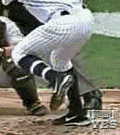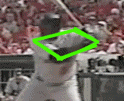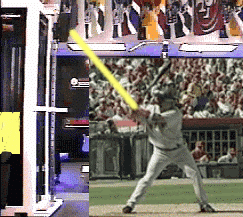Breaking down mechanics by using video is a wonderful tool that enables us to determine what the best in the business are doing while swinging a bat. IMO this is the easy part.
I want to further my coaching skills by learning how to TEACH what we see to hitters that are not doing what is done in a high level swing.
Many verbal que's get thrown around at the local cages that are easily disproven through video when taken word for word. (swing down, knob to the ball, shoulder to shoulder, ect...) I have seen instructors give my son lessons that made me cringe when I heard the verbal que's.....yet my sons swing improved, while not doing literally what he (instuctor) said, the que's put him in a position that resembled more of a high level swing.
What are prefered verbal que's used by coaches and players to get yourself or your student into a better position to hit.
Tell me and other readers how to TEACH:
-balance
-posture
-grip
-tip n' rip (personel favorite)
-rotation
-extension
-finish
-wieght shift
-hand action
-leverage
-tilt
-What am I forgetting?
Please list any que's that you have used to help address any of these issues with your students.
Original Post









